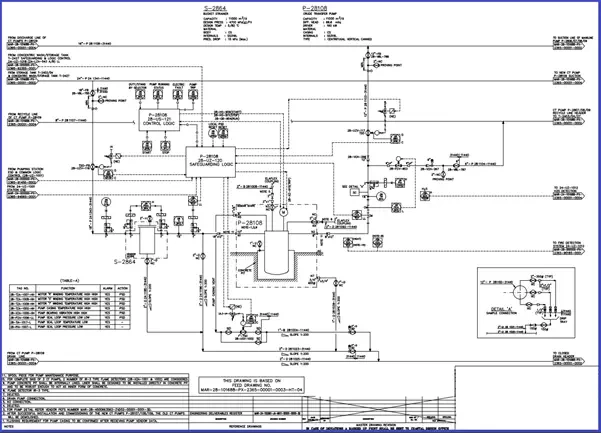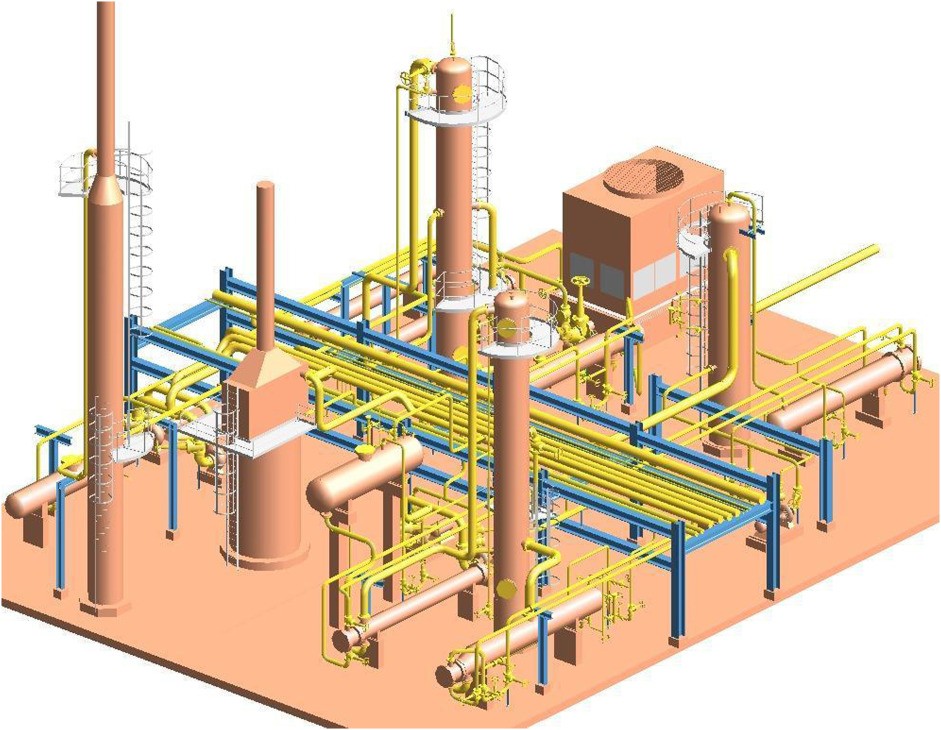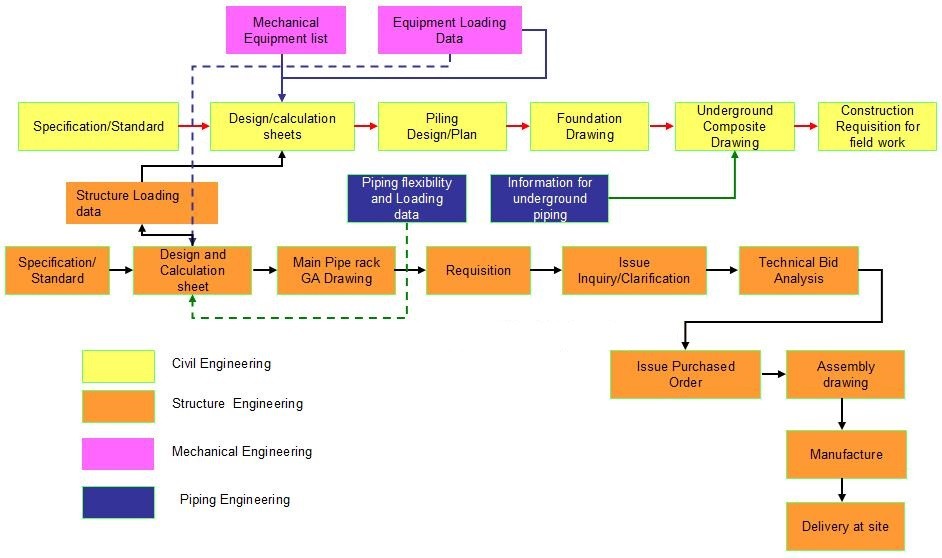Some Important Piping Codes and Standards
Piping codes and standards are the main pillars of any piping
industry. As, the integrity of the piping system depends upon the
considerations and principles used for designing, construction, inspection, and
maintenance of the system. In practice, the assurance that the design and
construction of a piping system will meet safety requirements is achieved
through the use of published engineering codes and standards.
Piping
systems are made of components like pipes, fittings, flanges, gaskets, bolts,
nuts, valves, strainers, piping supports, and special parts such as steam
traps, bellows, flame arresters, hoses, sight glasses, etc. These piping
components can be made in a variety of materials, in different manufacturing
processes, in different types and sizes. These different processes can be
achieved with defined codes and standards.
In these articles, we will see
some major piping codes and standards and their application.
Difference
Between Codes and Standards

Codes
and standards both provide the engineering criteria or method through which the
piping integrity can be ensured and it simplifies the design consideration to
make sure adherence to the standards. Many of us (the designers and engineers)
think that the terms code and standard are synonymous, but this understanding
is incorrect. Let’s understand the difference below.
Codes
The
piping codes provide specific design criteria for the activities such as
material (MOC) selection, checking of allowable working stresses, and load
criteria that must be considered for design per the particular application.
In
addition, criteria are provided to determine the minimum pipe wall thickness,
material behavior due to the effects of internal or external pressure, dead
weight, seismic loads, live loads, and thermal expansion/contraction.
Piping
codes provide design rules for non-standard fittings
like miter bend and also for the reinforcement pad of stub-in or
stub-on piping branch connections. Piping Codes do not provide design
consideration for standard fittings or components such as elbows, tees,
flanges, valves, olets fittings, etc.
Example
of Codes
ASME
B31.1, ASME B31.3, ASME B31.4, etc.
Standards
Standards
provide the design criteria and rules for individual piping components or
fittings, and also the Class (pressure-temperature ratings) selection criteria
of piping components such as flanges, valves, gasket, bolts and nuts.
There
are mainly two types of standards:
·
Dimensional Standards
·
Pressure-temperature based standards
Dimensional
standards provide dimensional parameters for the particular piping components.
The main purpose of dimensional standards is to ensure the same dimensions for
similar components manufactured by different vendors to achieve
interchangeability. Some components are also manufactured per the manufacturing
standards.
Pressure-temperature
based standards are used for the rating based components which provides the
maximum pressure holding capacity of that particular component.
Example
of Standards
ASME B16.9,
ASME B16.10 ASME B16.5, etc.
What do
You Mean by Recommended Practices?
Recommended
practices are the documents prepared by a professional group, committee, or
company based upon good engineering practices held in the industry. Many
companies also generate their own recommended practices based upon the old
projects. In order to have consistency in design and to avoid having one
project differ from others for cost-effectiveness.
Benefits
of Referring Codes and Standards
·
Codes and standards provide single direction thinking to
all.
·
It ensures the safety and reliability of the system.
·
The local government shows the green signal only if the
plant is designed under the published codes and standards.
·
It creates a similarity in engineering considerations, terms,
principles, practices, materials, processes, etc.
·
Standardization to the way of working.
·
It minimizes mismatching and promote the
interchangeability.
·
Helps to reduce the cost of the projects.
·
Code & standards make ease of communicating within the
different engineering departments.
Now,
we will see the different types of Piping codes and standards, recommended
practices, and their applications below-
Pressure
Piping Codes
The
American Society of Mechanical Engineers (ASME) established the ASME
B31 Pressure Piping Code to ensure the safety of the pressure piping
system design and construction through published engineering rules.
Followings
are the some major pressure piping codes-
ASME
B31.1 Power Piping
ASME
B31.1 Code is mainly used for the design and construction of power piping of
Electric Power Generating Stations, Industrial & Institutional Plants,
Geothermal Heating Systems, and Central & District Heating and Cooling
Systems.
ASME
B31.3 Process Piping
ASME
B31.3 Code is mainly applicable to the design and construction of pressure
piping found in Petroleum Refineries, Chemical plant, Pharmaceutical, Food,
Textile, Paper, Paint, Cryogenic, and any Process Plants and Terminals.
ASME
B31.4 Hydrocarbon Transportation Pipeline
ASME
B31.4 Code is applicable for the pipelines that are used to transport liquids
between plants, terminals, and pumping regulating stations. These liquids
include crude oil, condensate, natural gasoline, liquefied petroleum gas,
carbon dioxide, liquid alcohol, and liquid petroleum products. For example the
pipeline from upstream to midstream or downstream.
ASME
B31.5 Refrigeration Piping and Heat Transfer Components
ASME
B31.5 Code is applicable for the design and construction of pressure piping
containing refrigerants or coolants. It is mainly used for HVAC piping system.
ASME
B31.8 Gas Transportation and Distribution Piping Systems
ASME
B31.8 Code is applicable for gas transportation pipelines between the sources
and terminals. It also applies to gas pipelines, gas compressor stations, gas
metering & regulation stations.
ASME
B31.8 deals with the design, construction, inspection, operation, and
maintenance of gas transportation pipeline, but it does not deal with auxiliary
piping, such as water, air, steam, or lubricating oil.
ASME
B31.9 Building Services Piping
ASME
B31.9 Code is used for the design and construction of piping found in
Industrial, Institutional, Commercial, Public Buildings, and multi-unit
residences which do not require the different range of pipe sizes.
ASME B31.11
Slurry Transportation Piping Systems
ASME
B31.11 Code is mainly applicable to transport slurry of non-hazardous
materials, such as coal, mineral ores, and other solids, between the slurry
process plants and process piping system. One of the important uses of these
pipelines is in the mining industries to move ores from the mines to elsewhere.
Note:
There
are many similarities in each Code, such as minimum pipe wall thickness
calculation, inspection, and testing. But the exact rules are different for each
code depending upon their application. The allowable stresses are different for
each code, reflecting a different factor of safety per the different
applications and operating conditions.
ASME
Standards for Piping Components or Fittings
The
below standards are used for design, dimensions, manufacturing processes, and
end preparation for many commonly used piping components under ASME
B31.3 process piping systems.
ASME B16.1 – Cast Iron Flanges
and Flange End Fittings
ASME B16.3 – Malleable Iron Threaded Fittings of class 150 &
300
ASME B16.4 – Cast Iron Threaded Fittings of Class 125 & 250
ASME B16.5 – Flanges and Flanged Fittings
ASME B16.9 – Factory-Made Wrought Steel Buttwelding Fittings
ASME B16.10 – Face to Face and End to End Distance of Valves Except
for Socket & Threaded End
ASME B16.11 – Forged Fittings, Socket Weld and Threaded, Socket
weld End Preparation
ASMEB 16.12 – Cast Iron Threaded Drainage Fittings
ASME B16.15 – Cast Bronze Threaded Components of Class 125 &
250
ASME B16.18 – Copper Alloy Solder Joint Pressure Fittings
ASME B16.20 – Metallic Gasket
ASME B16.21 – Nonmetallic Gasket
ASME B16.25 – Buttweld or Bevel End Preparation
ASME B16.26 – Copper Alloy Components for Flared Copper Tubes
ASME B16.28 – Wrought Steel Buttweld Short Radius Elbows and Bend
ASME B16.34 – Valves Design – Flanged, Threaded, and Welding End
ASME B16.36 – Orifice Flanges
ASME B16.37 – Hydrostatic Testing of Control
Valves
ASME B16.39 – Malleable Iron Threaded Pipe Unions, Classes 1150,
250 and 300
ASME B16.42 – Ductile Iron Flanges and Flange End Fittings of Class
150 & 300
ASME B16.44 – Manually Operated Metallic Gasket Valves for Building
piping system
ASME B16.45 – Cast Iron Components for Solvent Drainage Systems
ASME B16.47 – Large Diameter Steel Flanges (NPS 26″ through NPS
60″)
ASME B16.48 – Steel Line Blanks
ASME B1.20.1 – Threading End Preparation
ASME B18.20.1 – Dimensions of Stud Bolts and Machine Bolts
ASME B18.20.2 – Dimensions of Nuts
API –
American Petroleum Institute
API 5L – Line Pipe
API 6D – Pipeline Valves
API 6FA – Fire Test for Valves
API 12D – Field Welded Tanks for Storage of Finish Products
(liquid)
API 12F – Shop Welded Tanks for Storage of Finish Products (liquid)
API 12J – Oil and Gas Separators
API 520 – Pressure Safety Valve
API 594 – Wafer and Wafer-Lug Check Valves
API 598 – Valve Inspection and Testing
API 599 – Plug Valves – Flanged and Butt-Weld Ends
API 600 – Gate Valves-Flanged and Butt-Weld Ends
API 602 – Small Bore Steel Gate Valves-Flanged, Threaded, or
Buttweld End
API 608 – Ball Valves-Flanged and Butt-Weld Ends
API 609 – Lug-and Wafer-Type Butterfly Valves
API 610 – Centrifugal Pumps
API 617 – Centrifugal Compressors
API 618 – Reciprocating Compressors
API 619 – Rotary-Type Positive Displacement Compressors
API 620 – Design and Construction of Low-Pressure Storage Tanks
API 650 – Breather Valve
API 660 – Heat Exchangers used for General Refinery Service
API 661 – Air-Cooled Fin-fan Heat Exchangers used for General
Refinery Service
ASTM –
American Society of Testing Materials
ASTM
provides a collection of documents called material specifications for pipes and
piping components.
·
Specifications starting with “A” denotes Ferrous steel
·
Specifications starting with “B” denotes non-ferrous alloys
·
Specifications starting with “D” denotes plastic material
ASTM
codes specify the basic chemical composition of the material and the
manufacturing process through which the material is shaped into the finished
product. Some of the common material standards are:
·
ASTM A 53 Gr. B – CS
(Carbon Steel)Seamless and Welded Pipe
·
ASTM A106 Gr. B – CS
Seamless Pipe
·
ASTM A 672 Gr. B60 – CS
Welded Pipe (EFW)
·
ASTM A333 Gr. 6 – LTCS
(Low-Temperature Carbon Steel) Seamless and Welded Pipe
·
ASTM A671 Gr. CC60 – LTCS
Welded Pipe
·
ASTM A335P11, P22, P5, P9, P91 &
P92 – LAS (Low Alloy Steel) Seamless Pipe
·
ASTM A691 – LAS
Welded Pipe
·
ASTM A 312TP304, TP316, TP321 &
TP347 – SS (Stainless Steel) Seamless & Welded Pipe
·
ASTM A358 Gr. 304, 316, 321 & 347
– SS Welded Pipe
·
ASTM A105 – CS
Forged Fittings
·
ASTM A350 Gr. LF2 – LTCS
Forged Fittings
·
ASTM A182 Gr. F11, F22, F5, F9, F91
&F92 – LAS Forged Fittings
·
ASTM A182 Gr. F304, F316, F321 &
F347 – SS Forged Fittings
·
ASTM A234WPB – CS
Wrought Fittings
·
ASTM A420 Gr. WPL6 – LTCS
Wrought Fittings
·
ASTM A234 Gr. WP11, WP22, WP5, WP9,
WP9 & WP92 – LAS Wrought Fittings
·
ASTM A403 Gr. WP304, WP316, WP321
& WP347 – SS Wrought Fittings
·
ASTM A216 Gr.WCB – CS
Casted Fittings
·
ASTM A352 Gr.LCB – LTCS
Casted Fittings
·
ASTM A217 Gr. WC6, WC9, C5, C12, &
C12A – LAS Casted Fittings
·
ASTM A351 Gr.CF8, CF8M & CF8C – SS
Casted Fittings
·
ASTM A515 Gr. 60 – CS
Plate/Sheet
·
ASTM A516 Gr. C60 – LTCS
Plate/Sheet
·
ASTM A387 Gr. 11, 22, 5, 9, 91 &92
– LAS Plate/Sheet
·
ASTM A240 Gr. 304, 316, 321 & 347
– SS Plate/Sheet
·
ASTM A193 Gr. B7 – Bolt
used with CS Fittings
·
ASTM A320 Gr. L7 – Bold
used with LTCS Fittings
·
ASTM A193 Gr. B16 – Bolt
used with LAS Fittings
·
ASTM A515 Gr. B8 – Bolt
used with SS Fittings
·
ASTM A194 Gr. 2H – Nut
used with CS Fittings
·
ASTM A194 Gr. 4 – Nut
used with LTCS Fittings
·
ASTM A194 Gr. 4 – Nut
used with LAS Fittings
·
ASTM A194 Gr. 8 – Nut
used with SS Fittings
AWS –
American Welding Society
AWS
provides information on the welding procedure, different weld application, weld
design, welder training, testing, and inspection of the weld joints.
·
AWS D10.12 – For
Pipe welding (mild steel)
·
AWS D10.18 – For
Pipe welding (stainless steel)
·
AWS B1.10 – Procedure
for the nondestructive testing of welds
·
AWS B2.1 – Guide
for Welding Procedure and welder Qualification
AWWA –
American Water Works Association
AWWA
standards are applicable to the piping elements required for low-pressure water
services. Few commonly used standards are as follows-
·
AWWA C-207 – Flanges
for General Services (4″ to 144″ NPS
·
AWWA C-500 – Gate
Valves for Water and Sewage system
·
AWWA C-502 – Dry-Barrel
Fire Hydrants
·
AWWA C-503 – Wet-Barrel
Fire Hydrant
·
AWWA C-504 – Rubber
Seated Butterfly Valves
·
AWWA C-507 –
Ball Valves for Size Range 6″ to 48″ NPS
·
AWWA C-508 –
Swing Check Valves 2″ to 24″ NPS
·
AWWA C-509 – Resilient
Seated Gate Valves for water and sewage
·
AWWA C-510 – Cast
Iron Sluice Gate Valves
·
AWWA C-900 – PVC
Pressure Pipe, 4″ to 12″ NPS for Water services
MSS-SP:
Manufacturers Standardization Society – Special Practices
The
most common MSS-SP standards are mentioned below-
MSS-SP 6 – Flange
Face Finish
MSS-SP 25 – Marking Procedure for Valves, Piping
Components, and Flanges MSS-SP 42 – Corrosion-resistant of
Class 150 Gate, Globe and Check Valves
MSS-SP 43 – Stud End
MSS-SP 56 – Procedure for Design, Manufacturing, and Material
Selection, of Hanger-Supports
MSS-SP 61 – Procedure for Pressure Testing of Valves
MSS-SP 67 – For Butterfly Valves
MSS-SP 70 – For Cast Iron Gate valves
MSS-SP 71 – For Cast Iron Check Valves
MSS-SP 72 – For Ball Valves
MSS-SP 78 – Cast Iron Plug Valves
MSS-SP 80 – For Bronze Gate, Globe and Check Valves
MSS-SP 83 – Unions Fittings
MSS-SP 85 – For Cast Iron Globe Valves
MSS-SP 88 – For Diaphragm valves
MSS-SP 95 – Swaged Nipple
MSS-SP 97 – Olets Fittings,
Boiler
and Pressure Vessel Code
ASME Section I
Power Boilers
ASME Section II
Materials Specifications
ASME Section IV
Heating Boilers
ASME Section V
Non-Destructive Examination
ASME Section VIII
Pressure Vessels – Division 1 and Division 2
ASME Section IX
Welding and Brazing Qualifications
ASME Section X
Fibreglass-Reinforced Plastic
Pressure Vessels
TEMA –
Tubular Exchanger Manufacturing Association
TEMA
is applicable for Heat Exchangers-
·
TEMA R – Heat
Exchangers Used in Hydrocarbon Industry
·
TEMA C – Heat
Exchangers Used in General Services
·
TEMA B – Heat
Exchangers Used in Chemical Services
NACE –
National Association of Corrosion Engineers
NACE standards apply to corrosion prevention and control and are used where corrosion is a key concern. NACE assists during the design, building, and operation of the piping system and minimizes the negative impacts of corrosion.

EJMA –
Expansion Joint Manufacturing Association
The
EJMA standards are used for the proper selection, manufacturing, and
application of metallic bellows expansion joints.
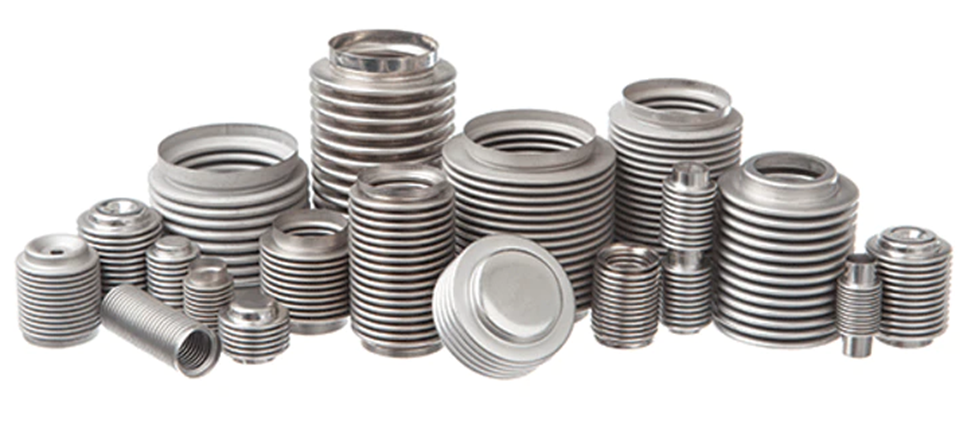
IBR –
Indian Boiler Regulations
IBR is
the Indian Standard for design, operation, inspection, and maintenance of the
Boiler.
 (1).png)
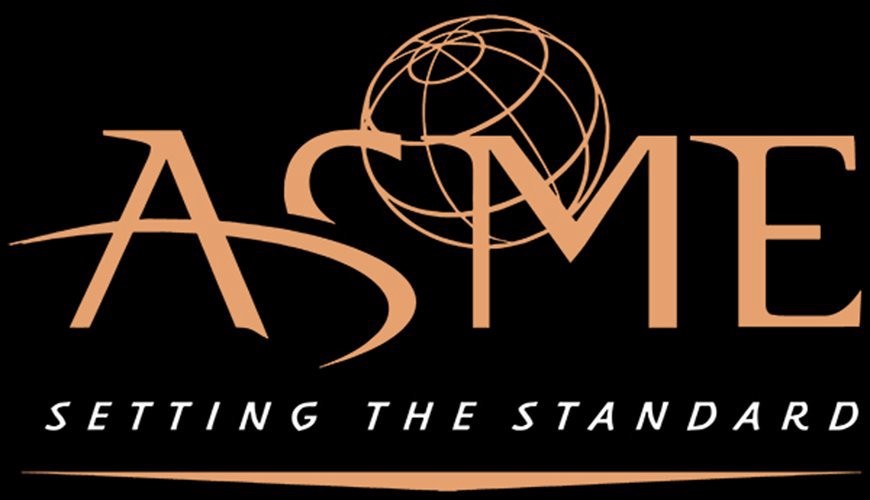
 Prakash K Menon
Prakash K Menon
